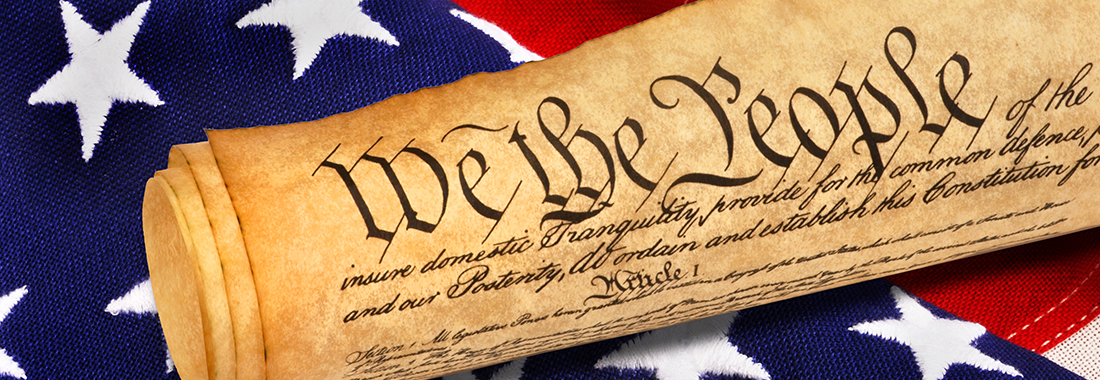Author: Lishan Desta, Professor, Collin College
The US Constitution is one of the briefest constitutions in the world. However, despite its brevity and elegant language, it’s likely most students haven’t read it at all.
So, the burden rests on Political Science instructors to create interest in our students to read the US Constitution from cover to cover, with interest and understanding.
The Importance of Student Interest in the Constitution
It’s both a challenge and our responsibility to create interest in our Constitution in the minds of our students. We must devise strategies that can show them the Constitution’s enduring qualities, how it sustains democracy and how it protects fundamental human rights.
Thus, instructors should develop methods to pique students’ interest in the Constitution. We want students to see the depth of the political wisdom inherent in the Constitution and recognize its relevance for current situations.
Scenario-Based Approach
Here’s one method I use to teach the US Constitution:
I tell a story about key constitutional principles, and then create worksheets that simulate real-world scenarios involving constitutional principles. The scenarios are written in legal disputes (or court scenes) form, which I’ve found enthuses my students.
In their attempt to solve the legal puzzles, students therefore scramble to read the Constitution.
For illustration purposes, I’ve included an abbreviated version of a worksheet used to teach the US Constitution through this scenario-based method.
Scenario Examples
Match one of the following constitutional principles with the constitutional law case scenarios described below.
Constitutional Principles [Disclaimer: All cases, including names and dates, are hypothetical.]
| Bills of Attainder | Establishment Clause | Lemon Rule |
| Corruption of Blood & Forfeitures | Exclusionary Rule | Miranda Rights |
| Due Process Clause | Ex Post Facto Laws | Present & Imminent Danger |
| Double Jeopardy | Free Exercise Clause | Privacy Rights |
| The Eighth Amendment | Gun Rights | Prior Restraint |
| Eminent Domain | Hate Crime | Reserved Powers |
| Equal Protection Under the Laws | Incorporation Doctrine | Writs of Habeas Corpus |
1). In 2011, Congress passed a law imposing economic sanctions on Iran. Then, in 2012, the U.S. Attorney General’s office sued Almoor, Inc. accusing it of exporting laptops to Iran between 2008 and 2010. Almoor’s lawyers, however, asked the court to dismiss the charge, saying the case violates the US Constitution.
Almoor’s lawyers would most likely use which constitutional principle to argue their case in court?
2). While trying to rob a 7-Eleven store in downtown Dallas, Mr. Kilby shot and seriously injured Mr. Hayle, the store clerk. In 2010, Mr. Kilby was sentenced to 30 years in prison without parole. Two years later, Mr. Hayle died of complications from his injuries. Soon after his death, Mr. Hayle’s lawyer requested the state of Texas to retry Mr. Kilby for murder. However, Mr. Kilby’s lawyer filed a counter suit saying that the new charge would violate Mr. Kilby’s constitutional right.
Mr. Kilby’s lawyer would most likely use which constitutional principle to argue his client’s case?
3). Mr. Kabootz was convicted of killing three police officers and sentenced to death by the XXXXX State Supreme Court. During Mr. Kabootz’s execution, the lethal injection he was given failed to work. As a result, he suffered severe cardiac arrest for five hours before he died. Hearing of the incident, the American Civil Liberties Union (ACLU) brought a lawsuit against the State of XXXXX. They then charged that the State had grossly violated the constitutional rights of Mr. Kabootz.
Which constitutional principle would the ACLU lawyers most likely use to bring a lawsuit against the State of XXXXX?
5). Mr. J. Kulu, a US citizen, was sentenced by a US federal court to 20 years in prison for his involvement in a terrorist attack. Simultaneously, the court also ordered Mr. Kulu’s family home to be demolished. His wife and children were to be stripped of their US citizenship rights and deported. However, Mr. Kulu’s family brought a lawsuit to a federal appeals court asking to reverse the lower court’s decision. The family then claimed the lower court’s decision violated their constitutional right.
Mr. Kulu’s family lawyer would likely use which constitutional principle to argue this case?
In conclusion, I hope these hypothetical cases and scenario examples engage your students and foster interest in the complex topic of the Constitution.
For further insights and peer-tested tips on teaching an effective course, check out our full library of professional development resources.

